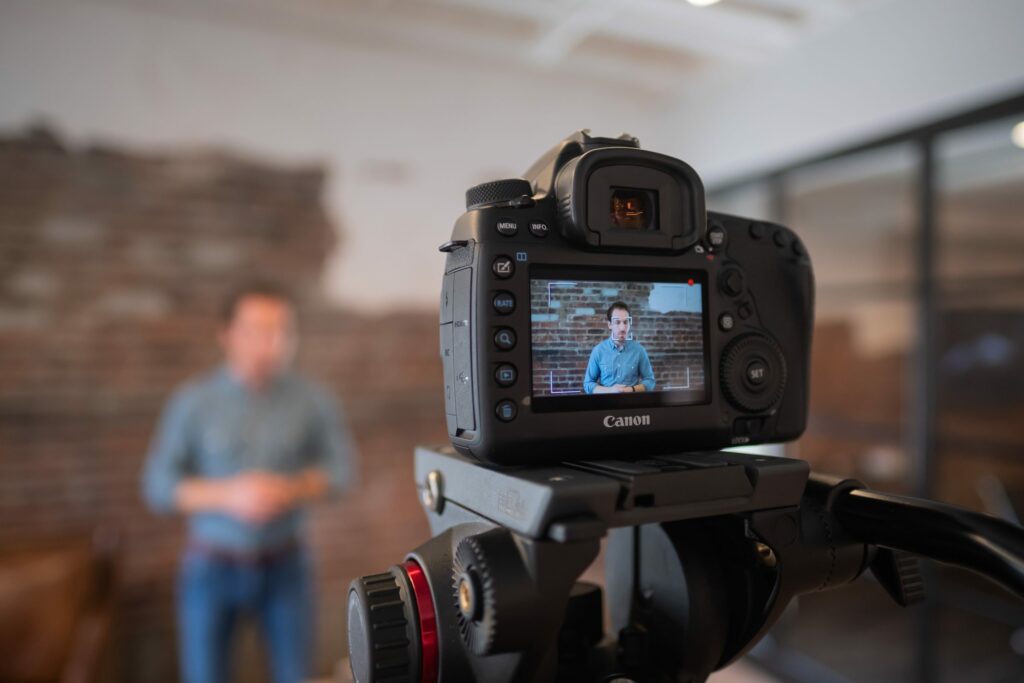There is no escape. Videos are dominating the internet and the way people absorb content.
By 2020, according to IT and networking giant Cisco, every second, around one million minutes of video will be published on the web. Thus, more than 80% of all traffic will be driven by videos.
Following this trend is what many organizations are doing, also in corporate education. To the video classes grow exponentially, stimulated by the demand of new generations to receive more dynamic, practical and objective training.
Video in people management offers productive interaction between students and teachers, and it is exactly for this reason that we list the seven steps for you to start, in the short term, producing courses in this format that is so well received by employees today.
Continue following the article and find out how plan, execute and collect the results of video classes!
1. Know your audience
As you may already know, the role of T&D is to develop skills and competences missing from the staff. But how do you find out what they are?
Your students will always have valuable criticism and suggestions for the content of your video courses. Based on this feedback, you can even better define who your target audience is.
Listening to employees frequently will make you produce videos that always adhere to the needs and desires of the moment, both individually and within teams.
2. Master the content presented
It may seem obvious, but it's important to reinforce: your audience expects quality content! This doesn't mean that you have to produce something at a Hollywood level, but rather deliver what students expect.
Therefore, it is essential to know in depth all the topics you intend to list for the video classes. If there is a gap of a new sales process, for example, extract from the area manager what should be passed on to the team, or even ask him to record the class himself!
And don't forget a good script. Put on paper everything you have in mind for the recording. This will give more security to those in front of the cameras, as well as helping in the editing stage.
3. Set up a good recording structure
As said in the previous topic, there is no need for something megalomaniacal in your video classes. The essential thing to guarantee quality content is the triad equipment, recording and editing location.
Today, an intermediate model smartphone already captures audio and video in a very satisfactory way, as long as it is in an environment with good lighting, silent and pleasant to the viewer's eyes. Add to all this a simple video editor, without the need for in-depth editing knowledge – yes, it is possible to find it.
Of course, you can invest in a professional camera, microphone and lighting, depending on your intentions and budget. In fact, YouTube is full of tutorials in this regard, if you want something more daring.
If in the end you are not comfortable doing everything yourself, or you still have an important demand that requires greater production perfection, do not hesitate to look for a specialized production company. Nowadays there are budgets for all budgets with compatible final quality levels.
4. Have a platform to distribute content
Having a place to concentrate your videos and apply them to knowledge trails works much better than showing them individually. It is then that the importance of a LMS system (Learning Management System).
Through it, you can track, employee by employee, who has watched a sequence of videos in full and who is out of date. Today, the good platforms even know how much of the video was actually watched and only release the next activities after this confirmation. This guarantees engagement and helps justify the famous ROI, or return on investment.
5. Make use of complementary materials
Video is a trend, everyone likes it, but you always need to diversify. The success of your course depends on offering materials that complement the video content.
As you will hardly be able to concentrate everything you want on the recordings, consider producing tests, quizzes, questionnaires, readings and discussion forums – to name a few examples – that enhance the role of video as the core of its methodology e-learning.
6. Conduct a benchmark
Find out what direct and indirect competition is doing in videos. Do a lot of research, talk to professionals in the field, go to conferences on the topic. These are some important tips for you to apply knowledge in line with the best on the market.
7. Measure results
A well-executed corporate education strategy has as its backdrop the measurement of results. Create goals and performance indicators that make sense at the end. In other words, understand how your video classes are influencing, in practice, your company's results and KPIs.



